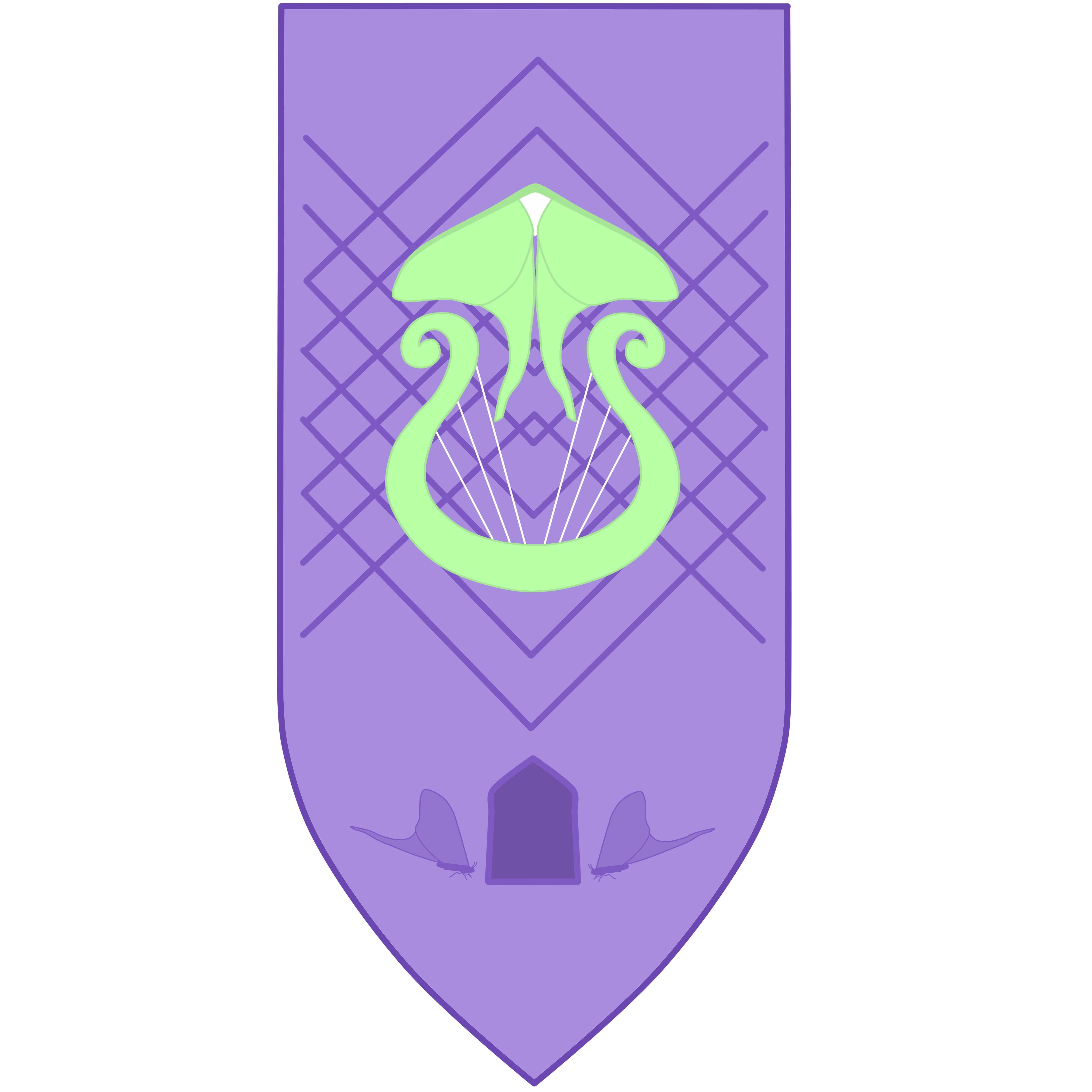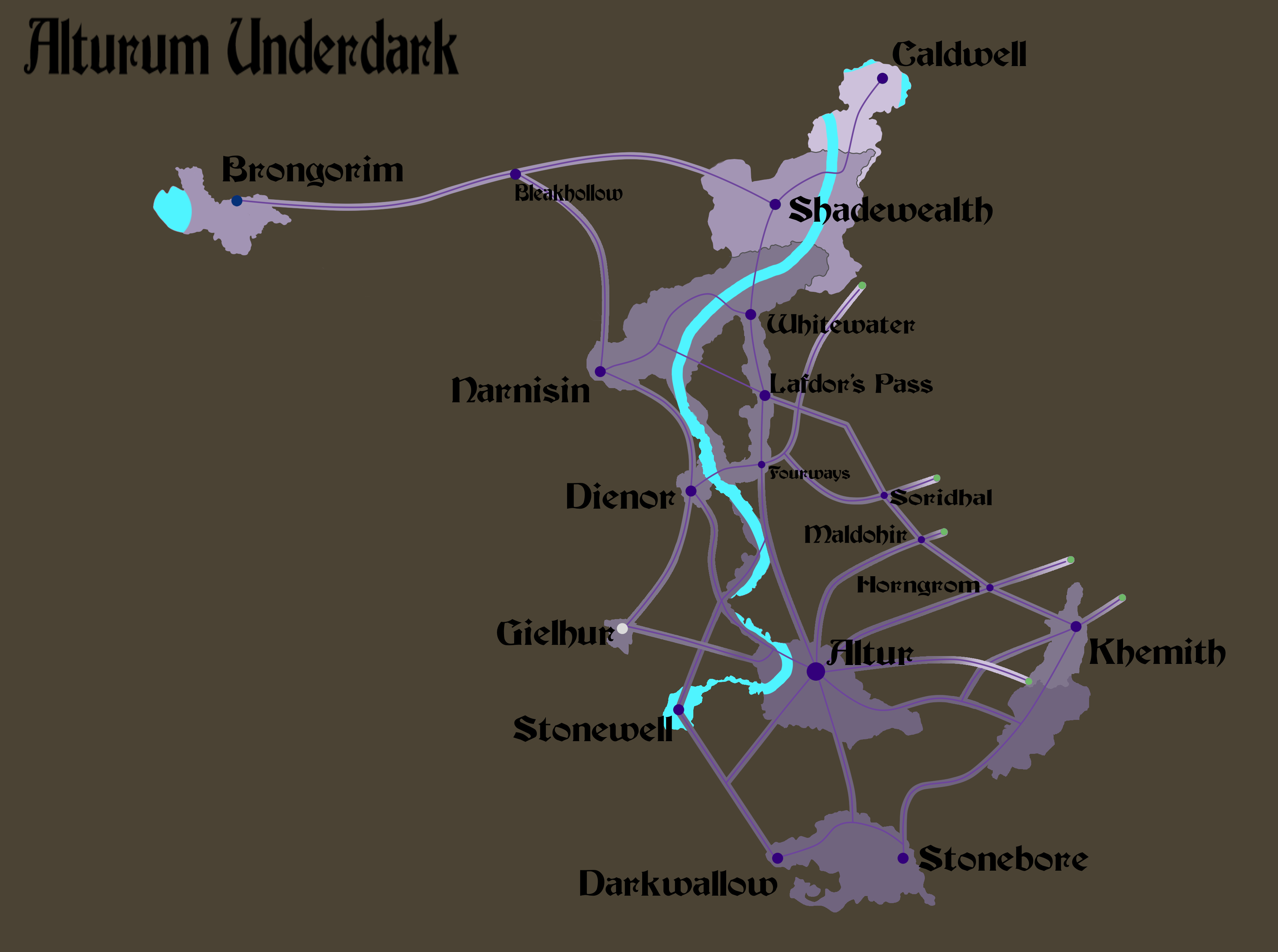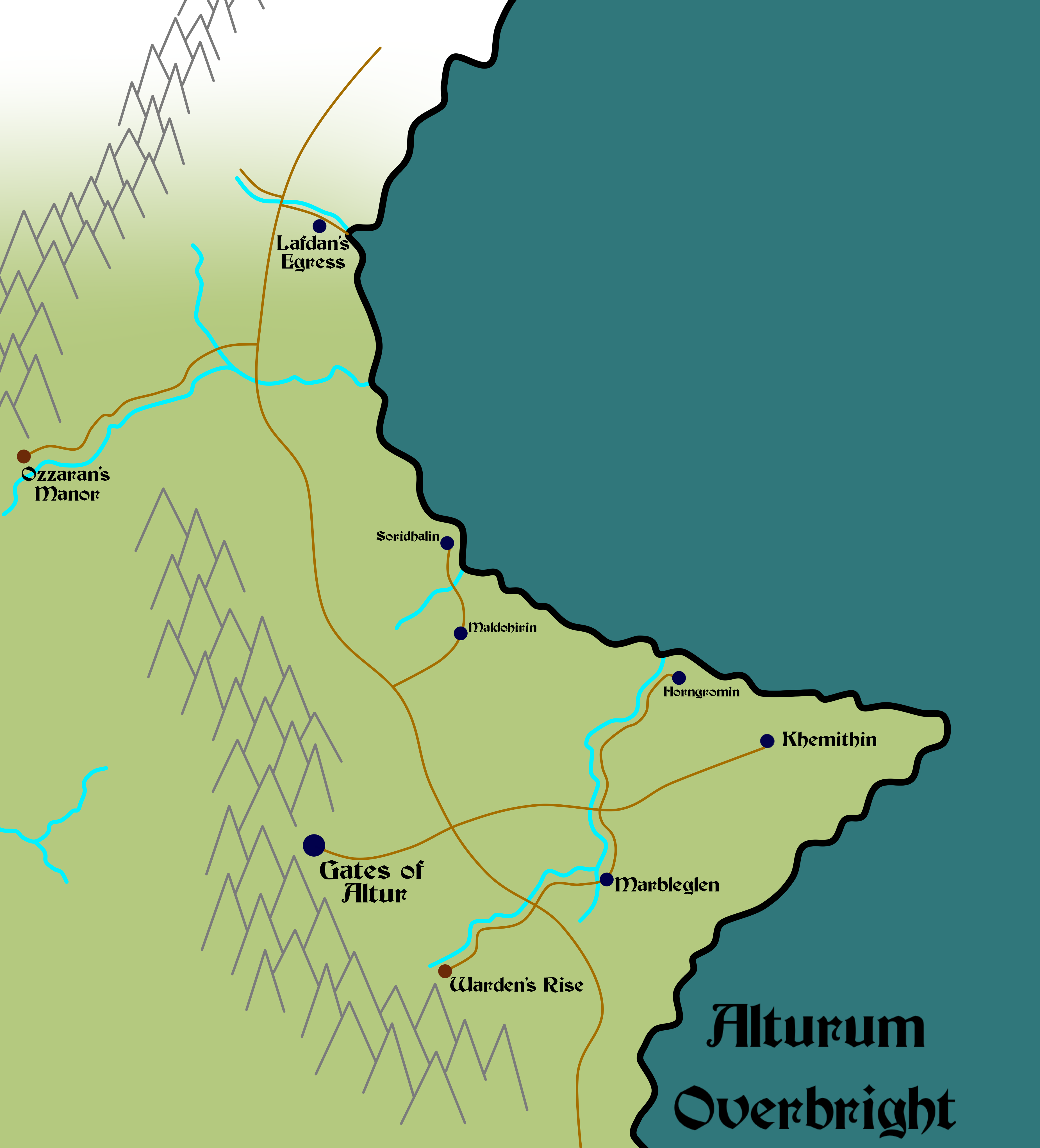 The Alturum Empire, Home of the Bard-Kings
The Alturum Empire, Home of the Bard-Kings
 The Alturum Empire, Home of the Bard-Kings
The Alturum Empire, Home of the Bard-Kings


Deceptively small on the surface, the Alturum Empire actually spans the entire length of the Vaces Mountains, in a labyrinth of underground tunnels and cave system. The majority of the Alturum population is thus extremely well adapted to living underground, where the sun holds little sway. Outsiders often find the Alturum Depths to be a strange and uncomfortable place, and any travellers guide will repeatedly warn you to be careful when journeying in the depths. Even you don’t encounter any of the dangerous creatures that have adapted to the darkness, you may find yourself simply lost among the maze of tunnels dug over the many centuries since the Cataclysm.
The History of AlturWhen the Cataclysm tore across the surface of Astrael, the sudden influx of power contaminated most of the continent of Eikar. With the Capital City of Keassar torn asunder by the initial explosion, the nation was left with little influence over the remaining people, who all fled to the coasts. In the face of the rocky, difficult land along the eastern coastline, the groups of survivors who fled to the east sought more unique solutions, and when scouts and hunters started discovering immpressively large cave systems, many of them believed their salvation would come through burrowing into the very earth itself. Thus, the sporadic groups of underdwellers began to gather. Because the eastern towns were often more recently and less heavily tied to the Keassarum Empire, many of them responded to the Cataclysm with anger and betrayal. Many believed that Keassar could and should have been able to stop it, and in the aftermath, the underdwellers clung to a powerful mistrust of others and, for a very long time, a deep mistrust of large-scale community. In the face of such fear and mistrust, meetings between the different communities typically ended in conflict, which often turned bloody, and only resulted in worsening relations between the different people with every passing year. It wouldn't be until a mere 237 years before the end of the Second Age that the great bard Teyva Altur, having returned from a long journey through the many other regions of Eikar, decided that the underdwellers' well-developed traditions of mistrust and violence, were only harming everyone, and upon his return to his home in the deep, Teyva took up the life-long goal of healing the relations between the different deepdwellers. It was difficult, and often very dangerous work, but Teyva's dedication along with his impressive skills as an orator meant that by old age, he had succeeded in bringing an era of peace to the deep. His daughter, Arrat, followed in his path, both in their shared profession as a bard, and in his goal of peace, and due to her efforts, and eventually the efforts of her children, it was that her eldest son was eventually named the ruler of the newly-formed nation of Altur, and the legacy of the Bard-Kings of Altur was cemented when they wrote into the laws that the ruler of the great empire must first earn renown and respect as a bard. |
The People of AlturToday, the people of Eikar are best described as extremophiles. Those who survived the initial Cataclysm were either lucky or uniquely resilient, and the danger of Eikar in the centuries afterwards have encouraged them to evolve to better fit their uniquely peculiar environments. The denizens of Altur fit this model only too well. Rock GnomesTo the south, the small, chaotic passages of the Roothollow Caves sat just below the surface, making them well-suited to the shorter Neri, who climbed and crawled happily and dug their homes into soft clay-filled soil. The lack of good space for standard farming mattered little to the people of Roothollow who were happy to supplement their diets with mushrooms and grubs, alongside what foraging and hunting they could acquire on their occasional excursions on the surface. DwarvesThe less nimble Neri preferred to settle along the coasts, where the harder stone offered enough integrity to withstand more open space, as well as the possibility of maintaining more impressive tunnel systems. Easy access to the ocean made for abundant seafood, but added to the risk of flooded passages. Together this all means that the modern folk of this region are strong and hardy, with an impressive understanding of stone and metals, and a semi-aquatic lifestyle. Duergar/Deep GnomesThe nothern reach of the Vaces Mountains are well into the frozen north, and the people who sought the safety of the underground there needed to dig deeper than any, to protect themselves from the biting cold, and the ever-present danger of the tundra. As a result, these folk almost never surfaced, and their complete separation from the surface left them the most aggresively adapted to living in complete darkness. The modern northern cities have no central light-source, unlike their companion cities to the south, and while the people who live there have not completely lost their ability to see, their eyes are extremely sensitive to light, and as such those that leave home typically wear blindfolds to protect themselves from the discomfort of the greater light levels. DrowThose who fled east from the center of the continent, and the seat of Keassar were already heavily contaminated by the fae magic that spewed forth from the shattered power sources in the Capital. Escaping underground protected them from the ever-increasing danger of the developing wildlands that overtook the core Keassar, but it didn't stop the influence of the contamination they'd already faced. Corrupted by the fae, these people became an uncanny facsimile of what they had once been, with limbs that were longer than they should be and seemed to have more joints than they ought to, teeth that were just a touch too sharp, and ears that grew large and pointed. Their hearing now vastly improved, they became aware of the almost musical tone of the powers they had been utilizing for so many years. With the help of this increased awareness, they stayed closer to the corruption, working to limit the spread of the corruption and repair what damage they could. |